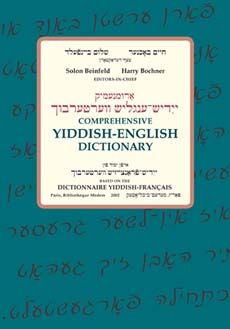[From Forverts]
אַ דאַנק דעם נײַעם בוך פֿון דוד פֿישמאַן וועגן „דער פּאַפּירענער בריגאַדע‟, די געהיימע גרופּע ייִדן וואָס האָט געראַטעוועט הונדערטער טויזנטער דאָקומענטן פֿון די נאַציס און זיי פֿאַרבאַהאַלטן אין דער ווילנער געטאָ, איז דער נאָמען שמערקע
קאַטשערגינסקי הײַנט בעסער באַקאַנט דעם ברייטן עולם
אַחוץ זײַן צײַט ווי אַ פּאַרטיזאַן און אַן אָנפֿירער פֿון דער „פּאַפּירענער בריגאַדע‟ איז קאַטשערגינסקי געווען צווישן די סאַמע וויכטיקסטע פֿאָרשער פֿון די לידער וואָס מע האָט געשאַפֿן אין די געטאָס און לאַגערן. פֿאַר דער מלחמה איז ער אויך געווען אַ מיטגליד פֿון „יונג־ווילנע‟. להיפּוך צו זײַן נאָענטן חבֿר אַבֿרהם סוצקעווער, וואָס איז בעצם געווען אומפּאָליטיש, איז קאַטשערגינסקי געווען אַ לעבנס־לאַנגער פּאָליטישער אַקטיוויסט. אין די אָנהייב 1930ער יאָרן האָט ער געשמאַכט עטלעכע יאָר אין תּפֿיסה צוליב זײַנע פּאָליטישע טעטיקייטן. זיצנדיק אין תּפֿיסה האָט ער אָנגעשריבן דאָס ליד „באַריקאַדן‟ (טאַטעס, מאַמעס, קינדערלעך…), וואָס שילדערט ווי אַ גרופּע ייִדישע אַרבעטער און זייערע קינדער שלאָגן זיך אין די גאַסן מיט דער פּאָליציי. כאָטש דאָס ליד איז געווען זייער פּאָפּולער פֿאַר דער מלחמה איז עס כּמעט אין גאַנצן פֿאַרגעסן געוואָרן ביז די „קלעזמאַטיקס‟ האָט עס אַרײַנגענומען אין איר רעפּערטואַר. אויבן קען מען זען ווי די קאַפּעליע שטעלט פֿאָר דאָס ליד אויף אַ קאָנצערט אין ניו־יאָרק, באַגלייט פֿון אַ כאָר
און אָט קען מען הערן ווי קאַטשערגינסקי אַליין זינגט דאָס ליד בעת אַן אינטערוויו מיטן פֿאָרשער בען סטאָנהיל
Click here to read more








 This
This 